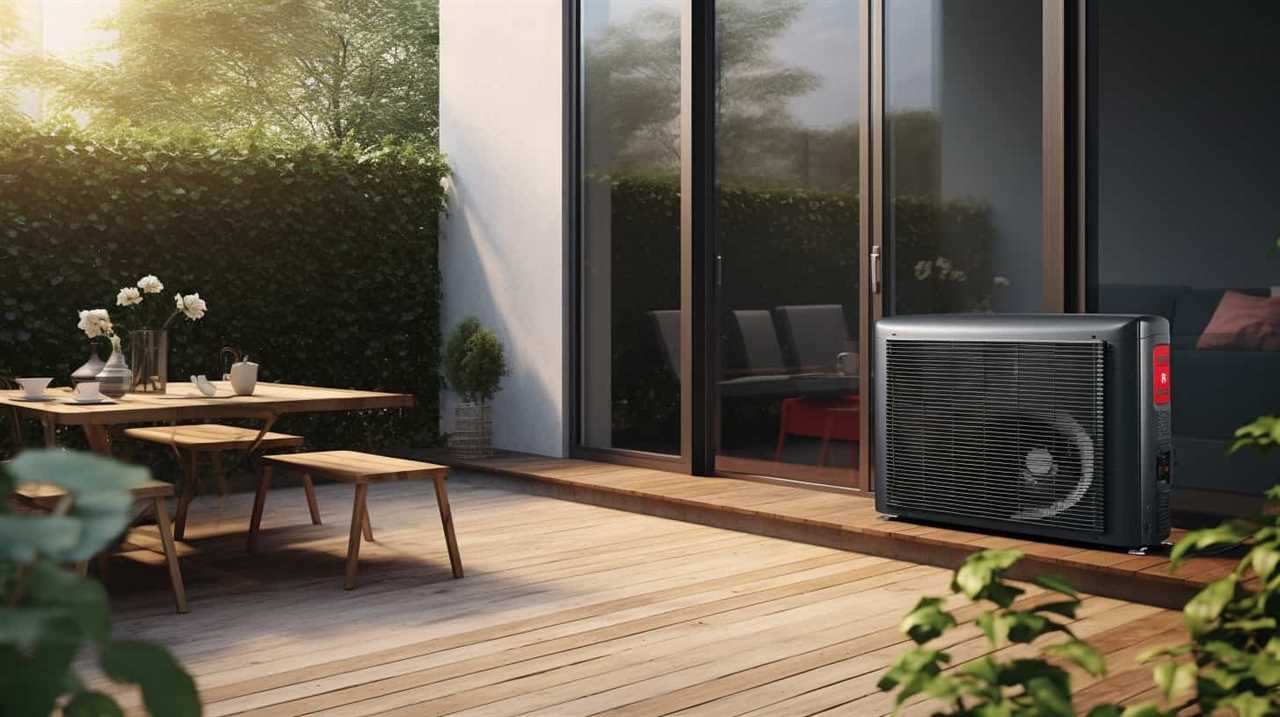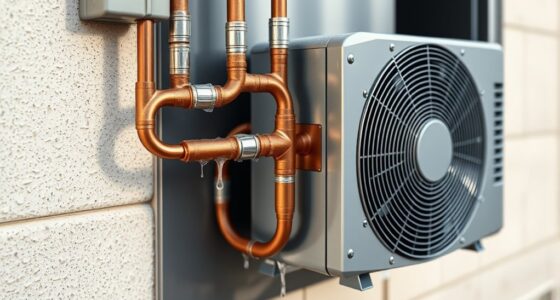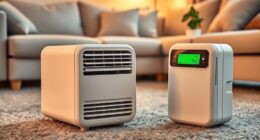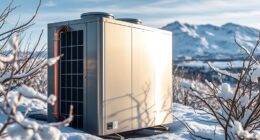Are you interested in understanding how heat pumps work, effectively transferring thermal energy to keep spaces warm in the winter and cool in the summer? Join us as we explore the thermodynamic principles that allow these amazing devices to operate.
Through our research and analysis, we will unravel the principles of heat pump operation, explore the role of refrigerants, and delve into the science of heat transfer.
Prepare to be amazed by the intricate dance of thermodynamics as we uncover the inner workings of heat pumps.
Key Takeaways
- The efficiency of heat pumps is influenced by the choice of refrigerant, with optimal refrigerant types maximizing efficiency.
- Traditional refrigerants contribute to ozone depletion and global warming, leading to regulations and a push for alternative refrigerants with lower environmental impact.
- Understanding thermodynamics is crucial for efficient heat transfer in heat pump operation, which involves the absorption, compression, and release of heat.
- Maximizing heat pump performance and efficiency can be achieved through the use of advanced heat exchangers, minimizing heat losses, proper system design, and insulation to minimize heat loss and maintain consistent temperature.
The Basics of Thermal Energy Transfer in Heat Pumps
In this section, we’ll explore the basics of thermal energy transfer in heat pumps. Understanding thermal energy efficiency and heat pump operation principles is essential for serving others in the field of heat pump technology.
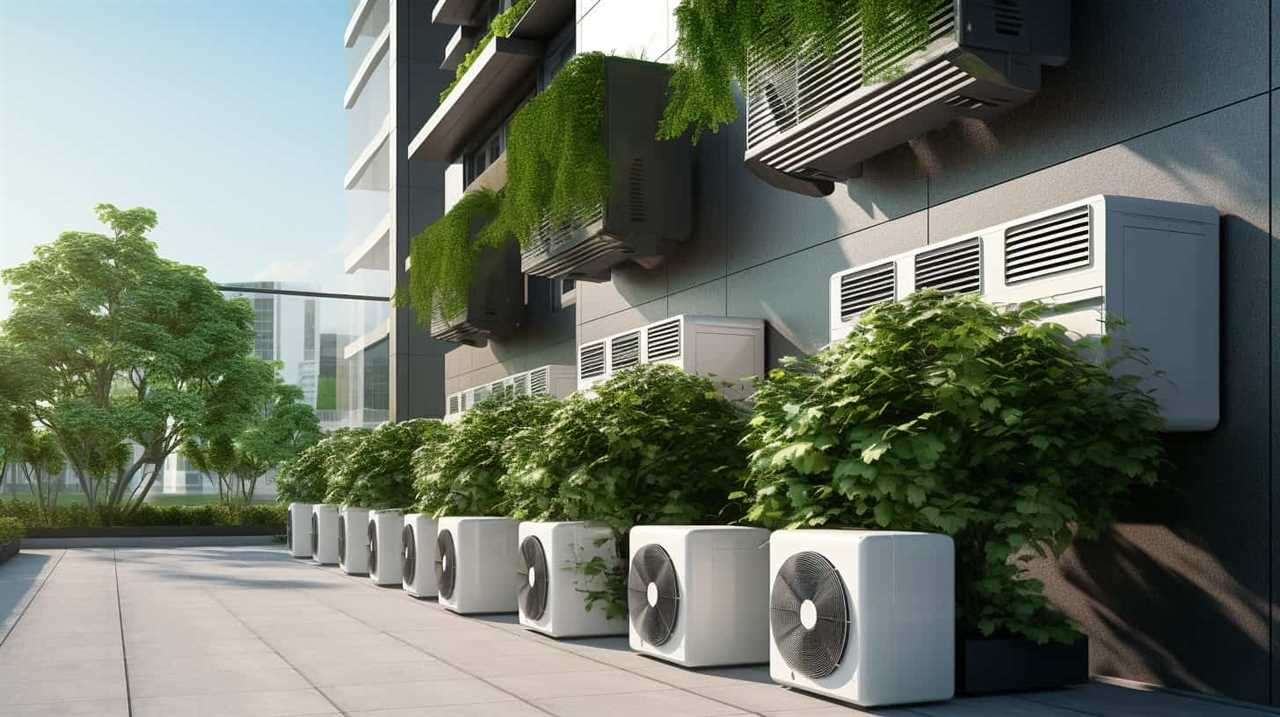
Thermal energy transfer in heat pumps is based on the principle of moving heat from a low-temperature source to a high-temperature sink. This process is achieved by utilizing a refrigerant that undergoes phase changes, such as evaporation and condensation.
The heat pump system consists of four main components: the evaporator, compressor, condenser, and expansion valve. The evaporator absorbs heat energy from the low-temperature source, while the compressor increases the pressure and temperature of the refrigerant.
The condenser releases the heat to the high-temperature sink, and the expansion valve regulates the flow of the refrigerant. By understanding these fundamental principles, we can optimize the thermal energy efficiency of heat pumps and ensure effective heat transfer for the benefit of those we serve.
Understanding the Role of Refrigerants in Heat Pump Efficiency
When it comes to heat pump efficiency, the choice of refrigerant plays a crucial role. Optimal refrigerant types can significantly impact the overall performance and energy efficiency of heat pumps.

It’s important to consider not only the thermodynamic properties of the refrigerant but also its environmental impact, as certain refrigerants have been found to contribute to ozone depletion or global warming.
Therefore, understanding the role of refrigerants in heat pump efficiency requires a careful examination of both their technical characteristics and their environmental implications.
Optimal Refrigerant Types
Our research indicates that selecting the optimal refrigerant type is crucial in maximizing heat pump efficiency. When it comes to energy efficiency and operating costs, the choice of refrigerant plays a significant role. Different refrigerants have varying thermodynamic properties, which directly impact the heat pump’s performance. By carefully considering factors such as heat transfer ability, environmental impact, and cost-effectiveness, one can choose the most suitable refrigerant for their heat pump system.
Energy efficiency is a key consideration when selecting a refrigerant. Some refrigerants have higher heat transfer coefficients, allowing for more efficient heat exchange and better overall performance. Additionally, refrigerants with lower global warming potential and ozone depletion potential are preferable from an environmental standpoint.

Operating costs are another critical factor to consider. The cost of the refrigerant itself, as well as maintenance and disposal expenses, can significantly impact the lifetime cost of the heat pump system. By choosing a refrigerant that’s readily available and cost-effective, users can minimize their operating costs and maximize the system’s efficiency.
Environmental Impact of Refrigerants
By understanding the environmental impact of refrigerants, we can better comprehend their role in heat pump efficiency. The choice of refrigerant has a significant impact on the overall environmental performance of a heat pump system.
Traditionally used refrigerants, such as chlorofluorocarbons (CFCs) and hydrochlorofluorocarbons (HCFCs), have been found to contribute to ozone depletion and global warming. As a result, regulations and policies have been implemented to phase out the use of these harmful substances.
In response, the industry has been actively researching and developing alternative refrigerants that have lower environmental impact. These refrigerant alternatives, such as hydrofluorocarbons (HFCs) and natural refrigerants like carbon dioxide (CO2) and ammonia (NH3), have been gaining popularity due to their lower global warming potential.
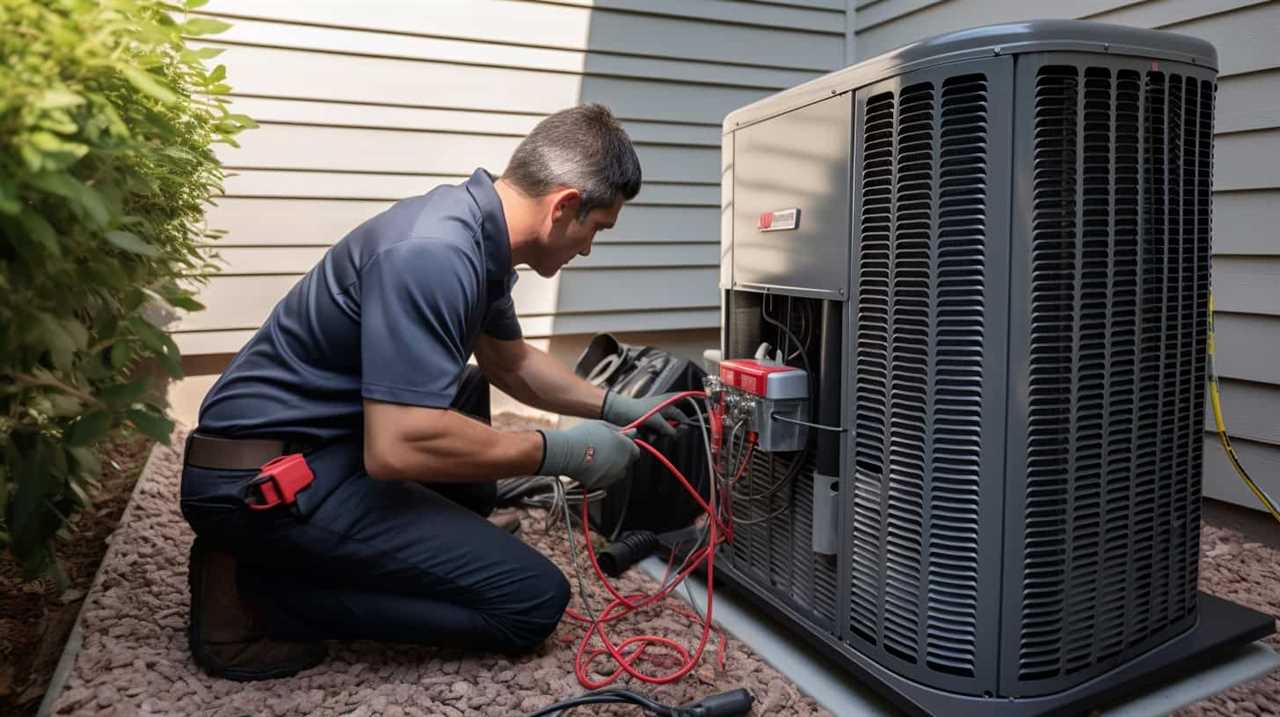
However, it’s important to note that while these alternatives have reduced environmental impact, they may still have their own drawbacks and trade-offs in terms of performance and safety. Therefore, proper selection and management of refrigerants, in accordance with regulations and policies, is crucial for maximizing heat pump efficiency while minimizing environmental impact.
Exploring the Principles of Thermodynamics in Heat Pump Operation
The principles of thermodynamics in heat pump operation can be explored to understand how these systems efficiently transfer heat.
One important aspect of heat pump operation is thermal energy storage, which allows for the storage and use of excess heat or cold for later use. This can be beneficial for homes or buildings that require heating or cooling at different times of the day.
Another crucial factor in heat pump operation is proper maintenance. Regular maintenance ensures that the system is operating at peak efficiency, reducing energy consumption and extending the lifespan of the heat pump. This includes tasks such as cleaning or replacing filters, checking refrigerant levels, and inspecting electrical connections.

The Science Behind Heat Pump Heat Transfer
When it comes to heat pump heat transfer, there are several key points to consider.
First, efficient heat transfer methods play a crucial role in the overall performance of the heat pump system. This involves the effective transfer of heat from one medium to another, such as from the outdoor air to the indoor space.
Second, the choice and properties of the refrigerants used in heat pumps are important factors that impact heat transfer efficiency.
Lastly, it’s crucial to consider the environmental impact of the heat pump system, including the potential for refrigerant leaks and the overall energy efficiency of the system.
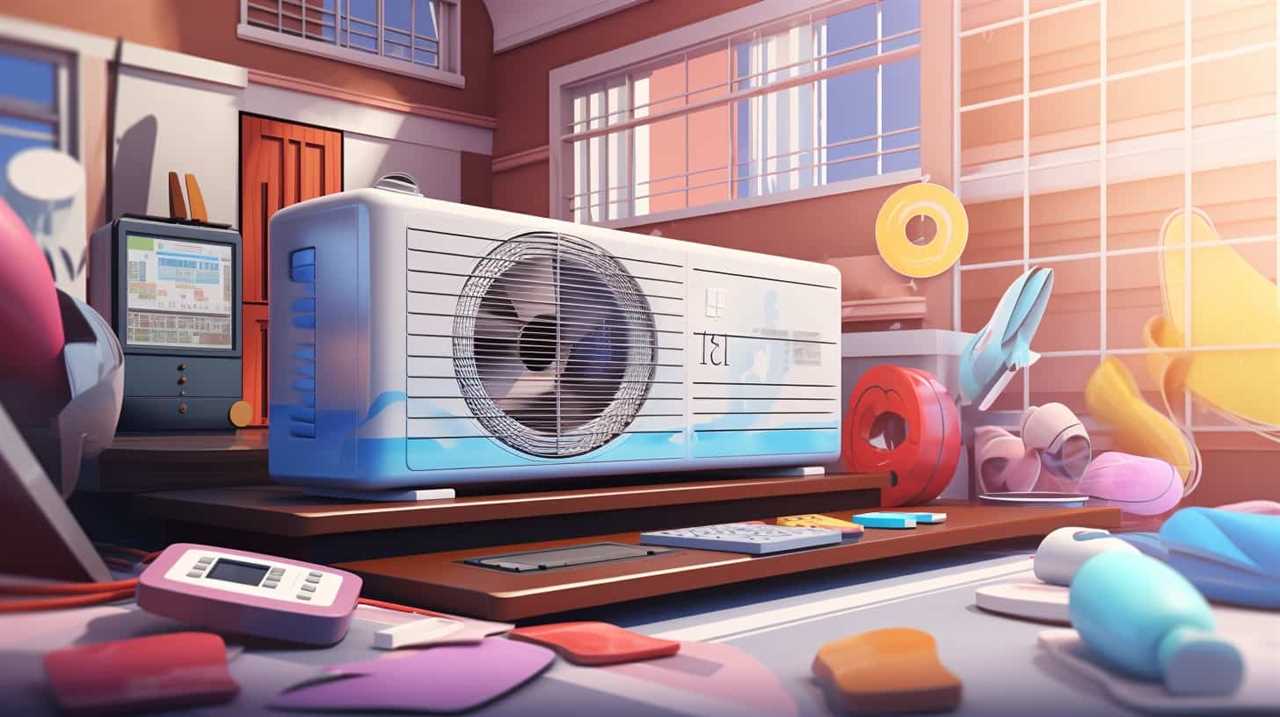
Efficient Heat Transfer Methods
We frequently employ efficient heat transfer methods to maximize the effectiveness of heat pump heat transfer. One such method is the use of advanced heat exchangers.
These heat exchangers are designed to efficiently transfer heat between the heat source and the heat sink. They’re constructed using materials with high thermal conductivity and are optimized to minimize heat losses through factors such as conduction, convection, and radiation.
Additionally, advanced heat exchangers often incorporate features such as fins or turbulators to increase the surface area and enhance heat transfer.
Role of Refrigerants
Refrigerants play a crucial role in the science behind heat pump heat transfer. They are the lifeblood of heat pumps, responsible for the transfer of heat energy from one location to another. Their properties determine the efficiency and effectiveness of the heat transfer process.

Here are four key ways refrigerants contribute to the science of heat pump heat transfer:
-
Thermodynamic properties: Refrigerants possess specific properties that allow them to change states at desired temperatures, absorbing and releasing heat energy in the process.
-
Heat capacity: The ability of a refrigerant to store and transfer heat is essential for efficient heat pump operation.
-
Pressure-temperature relationship: Refrigerants undergo phase changes at specific pressures and temperatures, enabling heat transfer between the indoor and outdoor environments.

-
Environmental impact: Careful refrigerant selection is crucial to minimize the carbon footprint of heat pumps and contribute to sustainable practices.
Environmental Impact Considerations
Minimizing the environmental impact of heat pump heat transfer requires considering the lifecycle emissions and disposal of refrigerants. To reduce the carbon footprint associated with heat pumps, it’s crucial to explore sustainable refrigerant alternatives that have lower global warming potential (GWP) and ozone depletion potential (ODP) compared to traditional refrigerants.
These alternatives aim to mitigate the negative environmental effects caused by the release of refrigerants into the atmosphere. By adopting sustainable refrigerants, we can significantly contribute to carbon footprint reduction and protect the ozone layer.
Additionally, proper disposal and recycling of refrigerants at the end of their lifecycle are essential to prevent further harm to the environment. Transitioning to sustainable refrigerant alternatives is a significant step towards achieving a more environmentally friendly heat pump industry.

Now, let’s delve into the next section to unveil the secrets of heat pump compressors.
Unveiling the Secrets of Heat Pump Compressors
By understanding the inner workings of heat pump compressors, we can unlock the secrets to their thermodynamic efficiency. These vital components play a crucial role in the overall performance of heat pumps. Here are four key aspects to consider when it comes to heat pump compressors:
-
Regular maintenance: Proper maintenance is essential for optimal compressor performance. Regularly cleaning and inspecting the compressor can help identify any potential issues and prevent costly breakdowns.
-
Troubleshooting techniques: When troubleshooting a heat pump, it’s important to check the compressor for any signs of damage or malfunction. Understanding common compressor problems and employing effective troubleshooting techniques can help identify and resolve issues promptly.
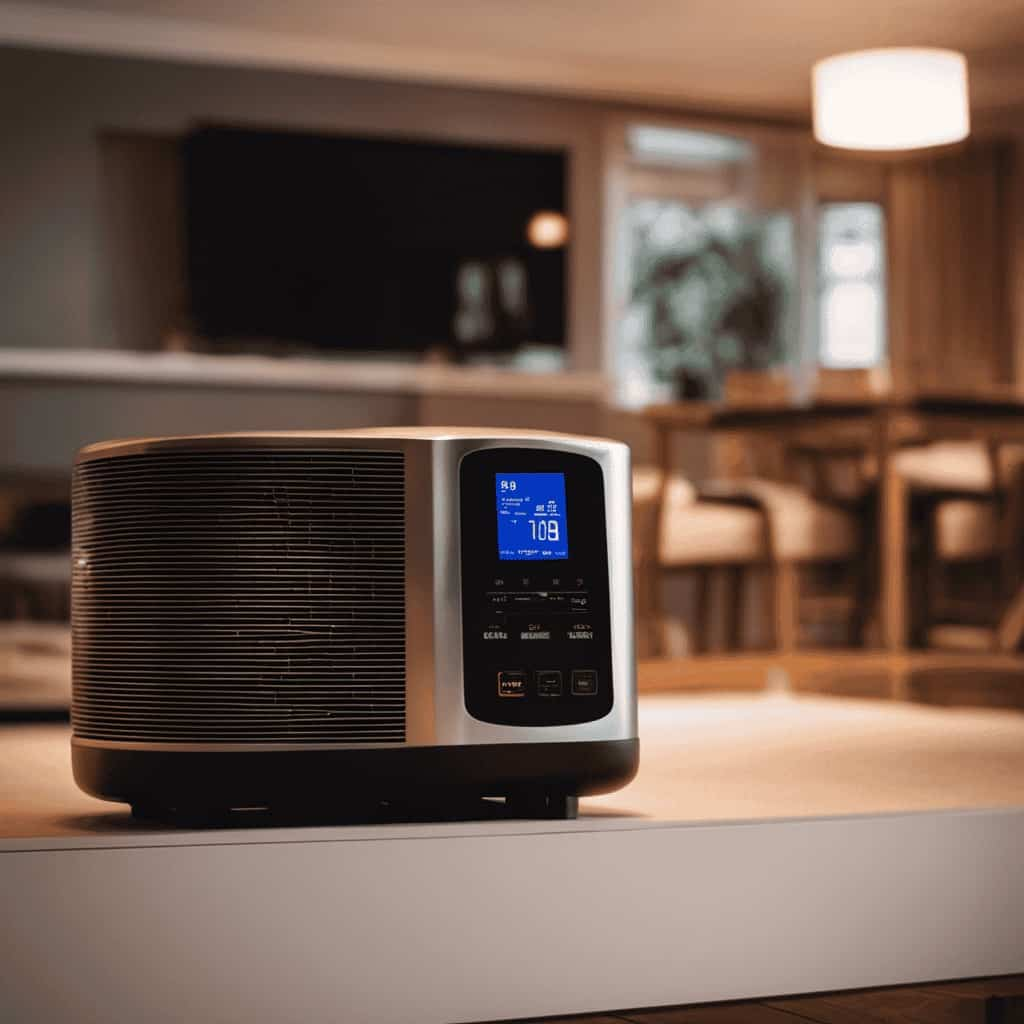
-
Compressor capacity: The capacity of the compressor should be matched with the heat pump system’s heating and cooling needs. An oversized or undersized compressor can lead to inefficiencies and decreased performance.
-
Compressor technology: Advancements in compressor technology, such as variable speed compressors, can significantly improve energy efficiency and overall system performance.
Maximizing Heat Pump Performance Through Optimal System Design
To maximize heat pump performance, we must prioritize optimal system design. Achieving maximum energy efficiency and heat pump optimization requires careful consideration of various factors such as sizing, layout, and component selection. A well-designed heat pump system can significantly reduce energy consumption, lower operating costs, and enhance overall performance.
When it comes to maximizing energy efficiency, one crucial aspect is proper sizing. Undersized or oversized systems can lead to inefficiencies and decreased performance. By conducting a thorough analysis of the heating and cooling load requirements, we can determine the appropriate system size that matches the specific needs of the building.
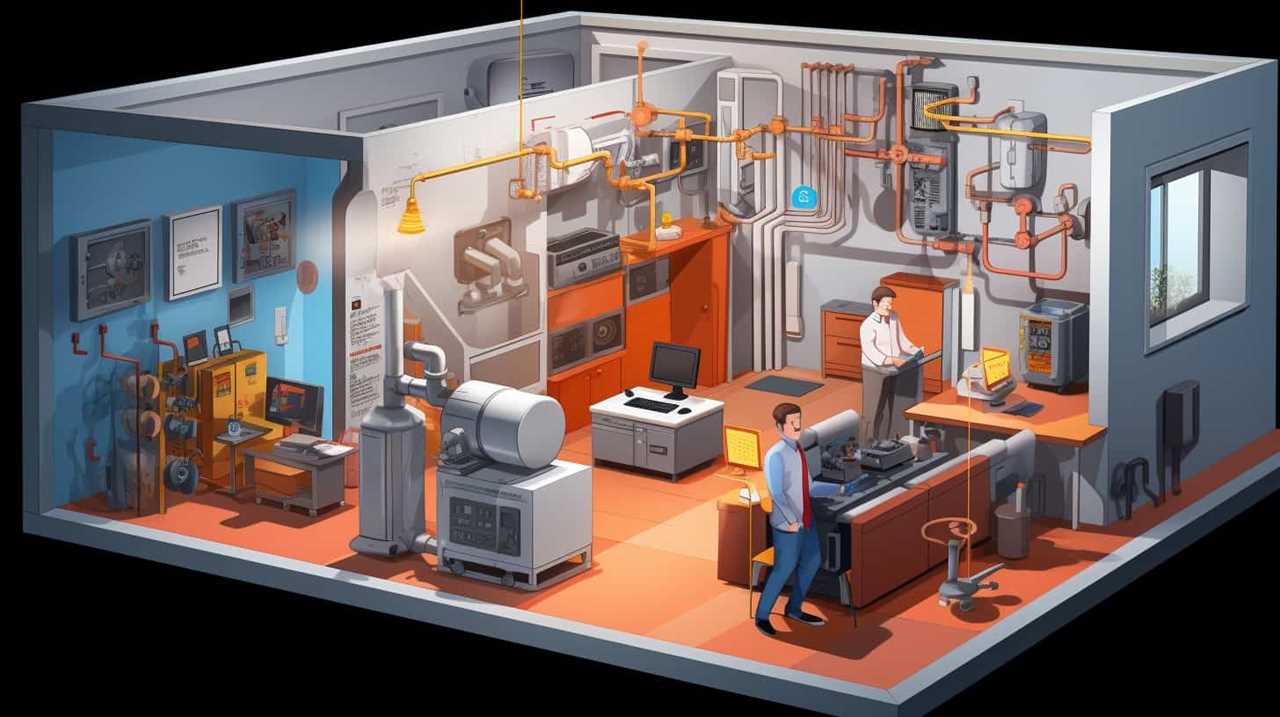
Layout and component selection also play a vital role in heat pump optimization. A well-designed system should minimize the distance and number of bends in the refrigerant lines, ensuring efficient heat transfer and reducing energy losses. Additionally, selecting high-quality components, such as advanced compressors and heat exchangers, can enhance system efficiency and overall performance.
The Importance of Insulation in Heat Pump Efficiency
Insulation plays a crucial role in maximizing heat pump efficiency and achieving energy savings. Proper insulation helps to minimize heat loss and maintain a consistent temperature within the system, allowing the heat pump to operate more efficiently.
On the other hand, poor insulation can lead to significant energy losses, reducing the overall efficiency of the heat pump and increasing energy consumption.
Insulation and Energy Savings
We can enhance heat pump efficiency by improving insulation in our homes. Effective insulation helps to minimize heat loss or gain, providing a stable indoor temperature and reducing the workload on the heat pump.

Here are four key ways in which insulation contributes to energy savings:
-
Energy efficient materials: Using insulation materials with high R-values, such as fiberglass or cellulose, helps to trap heat and prevent it from escaping or entering the home, reducing the need for constant heating or cooling.
-
Proper insulation techniques: Ensuring airtightness by sealing gaps and cracks in walls, windows, and doors prevents air leakage, thereby reducing energy loss and improving overall energy efficiency.
-
Thermal bridging prevention: By addressing areas where heat can bypass insulation, such as studs or joists, thermal bridging is minimized, leading to increased energy savings.
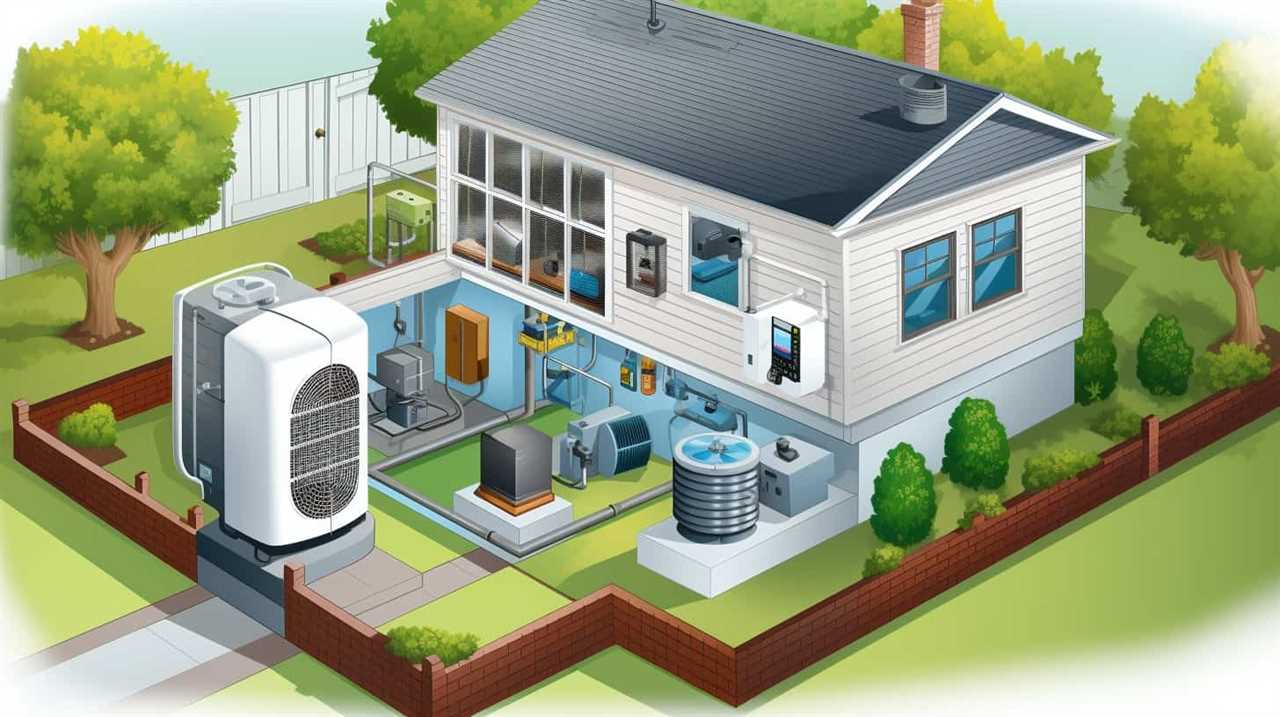
-
Attic and roof insulation: Insulating the attic and roof areas effectively helps to maintain a consistent indoor temperature, reducing the need for excessive heating or cooling.
Impact of Poor Insulation
By neglecting proper insulation, we risk compromising the efficiency of our heat pumps over time. Inadequate insulation can lead to significant energy loss and increased cost implications.
Insulation plays a vital role in preventing heat transfer between the indoor and outdoor environments. Without sufficient insulation, heat can escape or enter our homes, making our heat pumps work harder to maintain the desired temperature. This increased workload not only reduces the overall efficiency of the heat pump but also leads to higher energy consumption and utility bills.
Additionally, poor insulation can result in temperature fluctuations, discomfort, and reduced indoor air quality.

To ensure optimal heat pump performance and minimize energy loss, it’s crucial to invest in proper insulation that meets industry standards and effectively seals any potential areas of heat transfer.
The Impact of Climate on Heat Pump Operation
Since climate plays a significant role in the operation of heat pumps, it’s important to understand how different weather conditions can affect their efficiency and performance. Here are four key ways in which climate can impact heat pump operation:
-
Temperature: Heat pumps work by transferring heat from one place to another. In colder climates, heat pumps have to work harder to extract heat from the outside air, reducing their efficiency and increasing energy consumption.
-
Humidity: High humidity levels can affect the heat transfer process in heat pumps, making it more difficult for them to extract heat from the air. This can result in reduced performance and higher energy consumption.
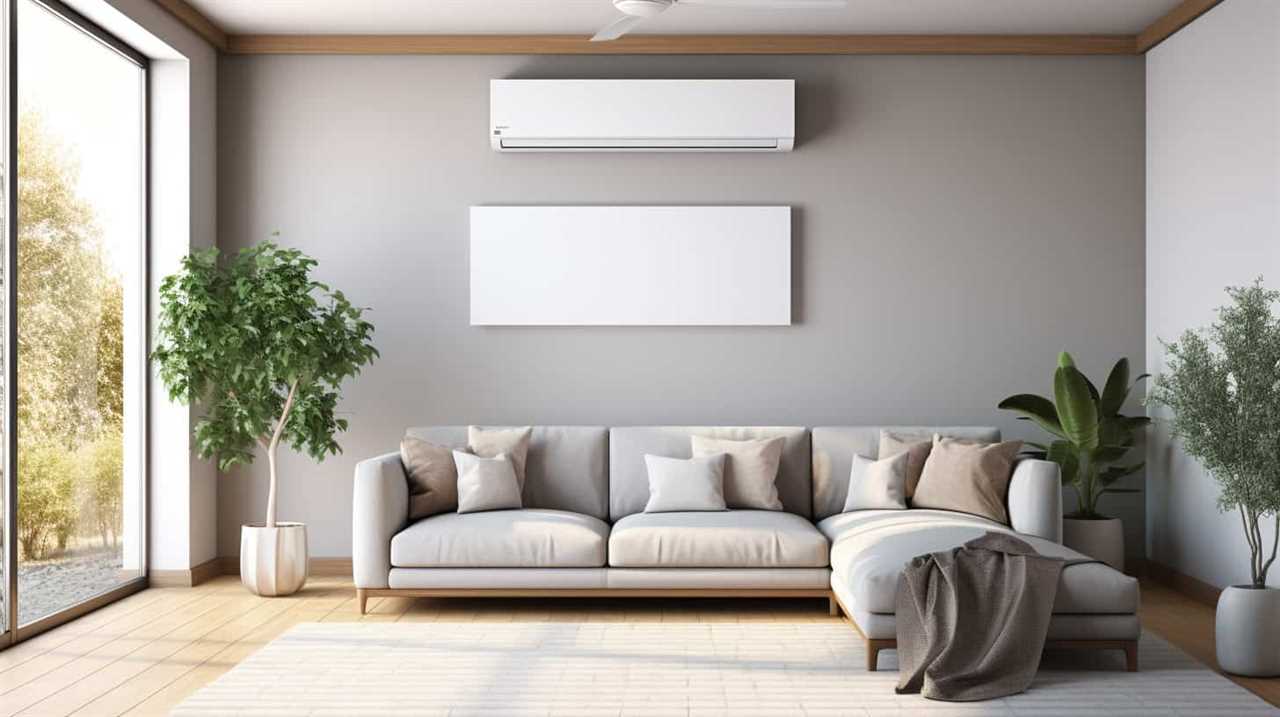
-
Extreme Weather Events: Heat pumps may struggle to operate efficiently during extreme weather events such as hurricanes or heatwaves. These events can put additional stress on the system and affect its ability to maintain desired indoor temperatures.
-
Climate Change: As climate change leads to more frequent and extreme weather conditions, heat pump operation may be further impacted. Rising temperatures, changing humidity levels, and increased frequency of extreme weather events can all affect the efficiency and performance of heat pumps.
Understanding the impact of climate on heat pump operation is crucial for optimizing their efficiency, reducing energy consumption, and providing optimal comfort for users. By considering these factors, we can better serve our customers and address the challenges posed by climate change.
Troubleshooting Common Issues in Heat Pump Thermal Energy Transfer
When troubleshooting common issues in heat pump thermal energy transfer, it’s important to identify and address any factors that may be hindering the efficiency and performance of the system.
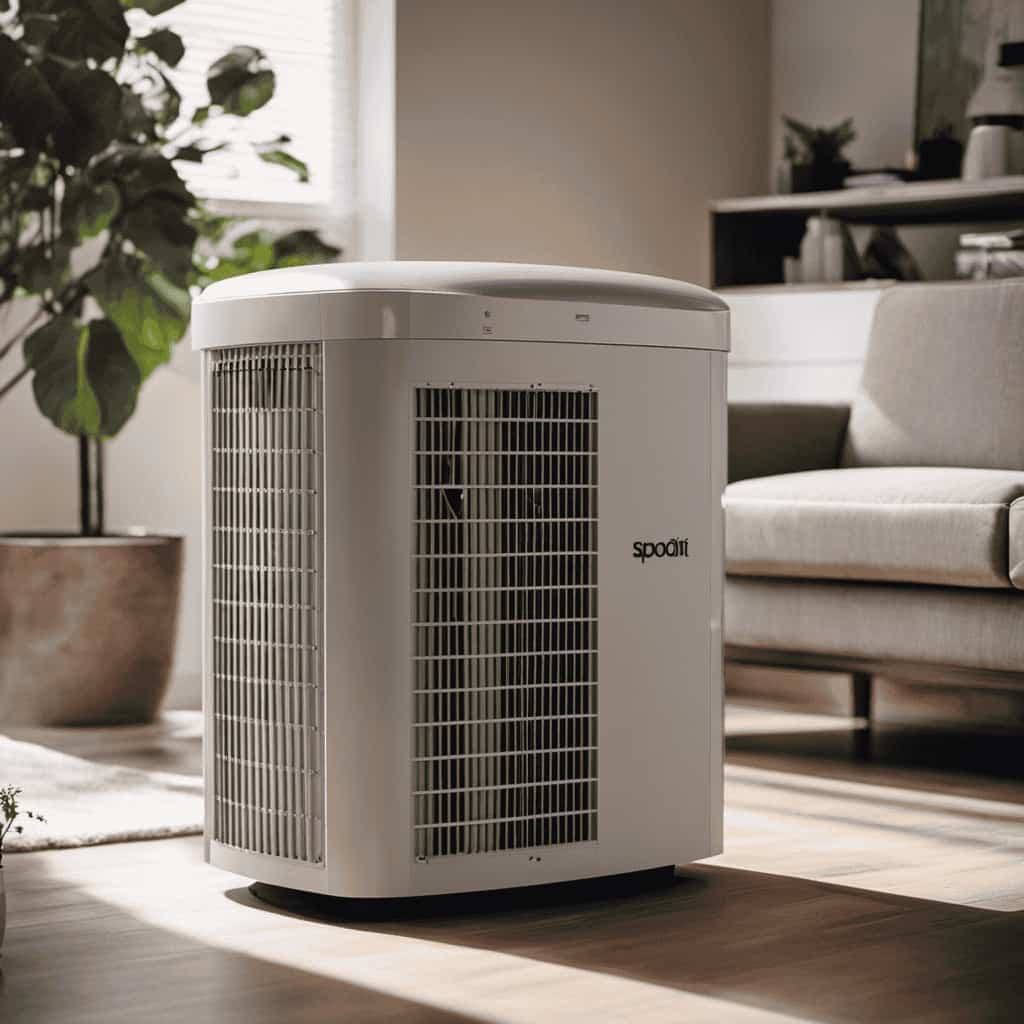
To begin, implementing effective troubleshooting techniques can help diagnose and resolve problems. One such technique is conducting a thorough inspection of the heat pump components, including the compressor, condenser, and evaporator. This can help identify any mechanical or electrical issues that may be affecting the transfer of thermal energy.
Additionally, regular maintenance is crucial to ensure optimal heat pump performance. This includes cleaning or replacing air filters, checking refrigerant levels, and lubricating moving parts.
The Future of Heat Pumps: Advancements in Thermal Energy Transfer Technology
We anticipate significant advancements in thermal energy transfer technology that will shape the future of heat pumps. These advancements will enable heat pumps to become more efficient, reliable, and environmentally friendly.
Here are four key areas where we expect to see progress:
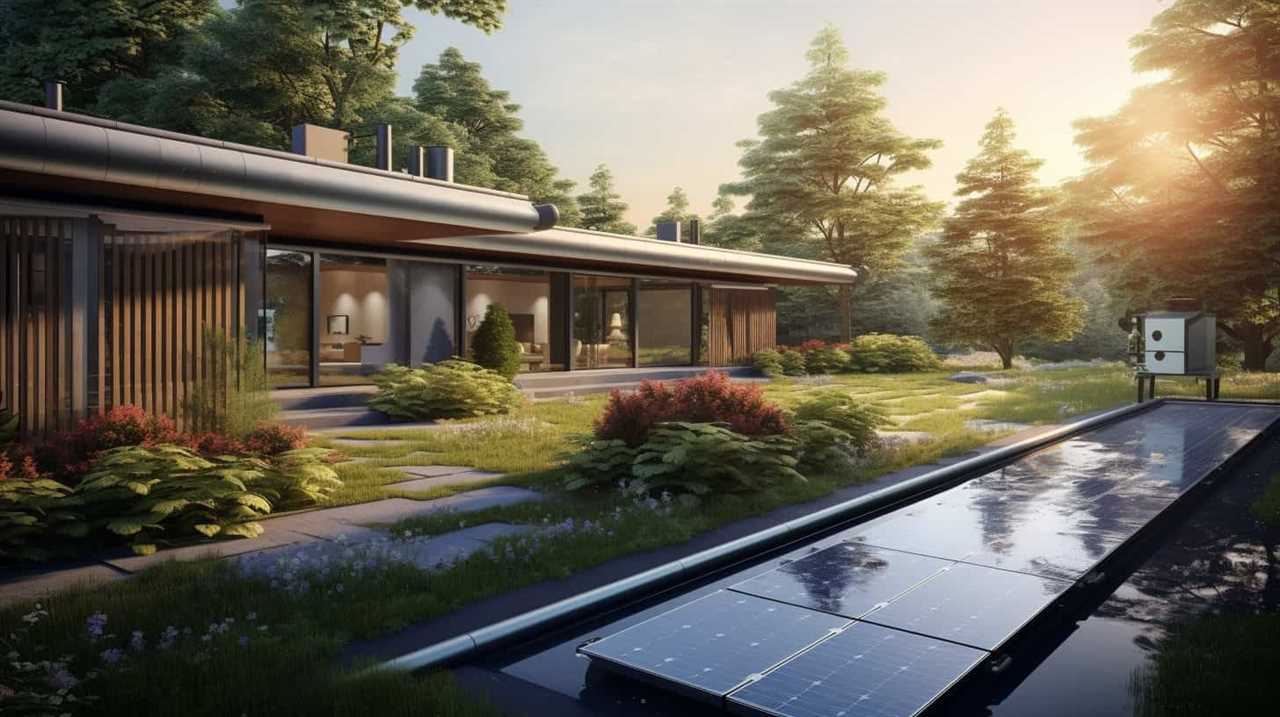
-
Advancements in renewable energy sources: Heat pumps will become more compatible with renewable energy systems, such as solar and wind power, allowing for greater sustainability and reduced reliance on fossil fuels.
-
Integration of smart technology: Heat pumps will be equipped with advanced sensors and control systems, enabling them to optimize their performance based on factors such as weather conditions and energy demand. This will result in higher efficiency and lower energy consumption.
-
Enhanced heat exchanger design: Improvements in heat exchanger technology will increase heat transfer efficiency, improving the overall performance of heat pumps and reducing energy wastage.
-
Development of advanced refrigerants: New refrigerants with lower global warming potential will be introduced, minimizing the environmental impact of heat pumps and ensuring compliance with evolving regulations.
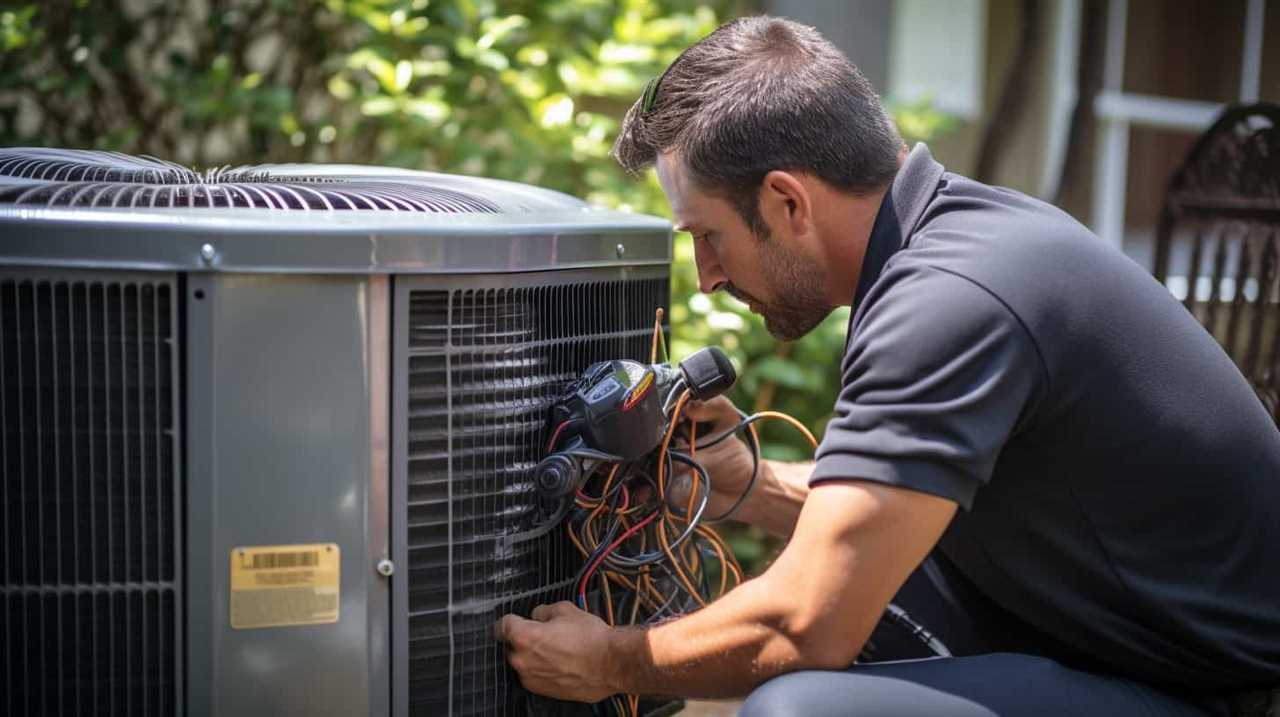
With these advancements, heat pumps will play a crucial role in providing sustainable and efficient heating and cooling solutions for a greener future.
Frequently Asked Questions
How Long Does It Take for a Heat Pump to Cool Down or Heat up a Room?
It takes a heat pump a variable amount of time to cool down or heat up a room, depending on factors such as room size, insulation, and desired temperature. Heat pump efficiency can lead to energy saving benefits.
Can a Heat Pump Be Used in Extreme Weather Conditions?
In extreme weather conditions, using a heat pump presents challenges to its efficiency. However, by understanding the thermodynamic secrets and implementing innovative solutions, we can optimize its performance and serve others effectively.
What Is the Lifespan of a Typical Heat Pump?
The lifespan of a typical heat pump depends on various factors, including regular maintenance, usage patterns, and environmental conditions. Factors that can affect heat pump efficiency and lifespan include proper installation, proper sizing, and regular cleaning and servicing.

Are There Any Government Incentives or Rebates Available for Installing a Heat Pump?
There are government incentives and rebates available for installing a heat pump. These incentives aim to promote energy savings and help individuals make environmentally friendly choices.
How Much Maintenance Is Required for a Heat Pump and What Are the Associated Costs?
Maintaining a heat pump involves regular inspections, filter changes, and cleaning. These maintenance tasks are essential for optimal performance and energy efficiency. The associated costs of maintenance can vary depending on the specific requirements of the heat pump.
Conclusion
As we delve into the intricacies of heat pumps and their thermodynamic secrets, we uncover a world of possibilities for efficient thermal energy transfer.
Like a well-orchestrated symphony, the principles of thermodynamics, refrigerants, compressors, insulation, and climate all work together to create the harmonious melody of heat pump operation.
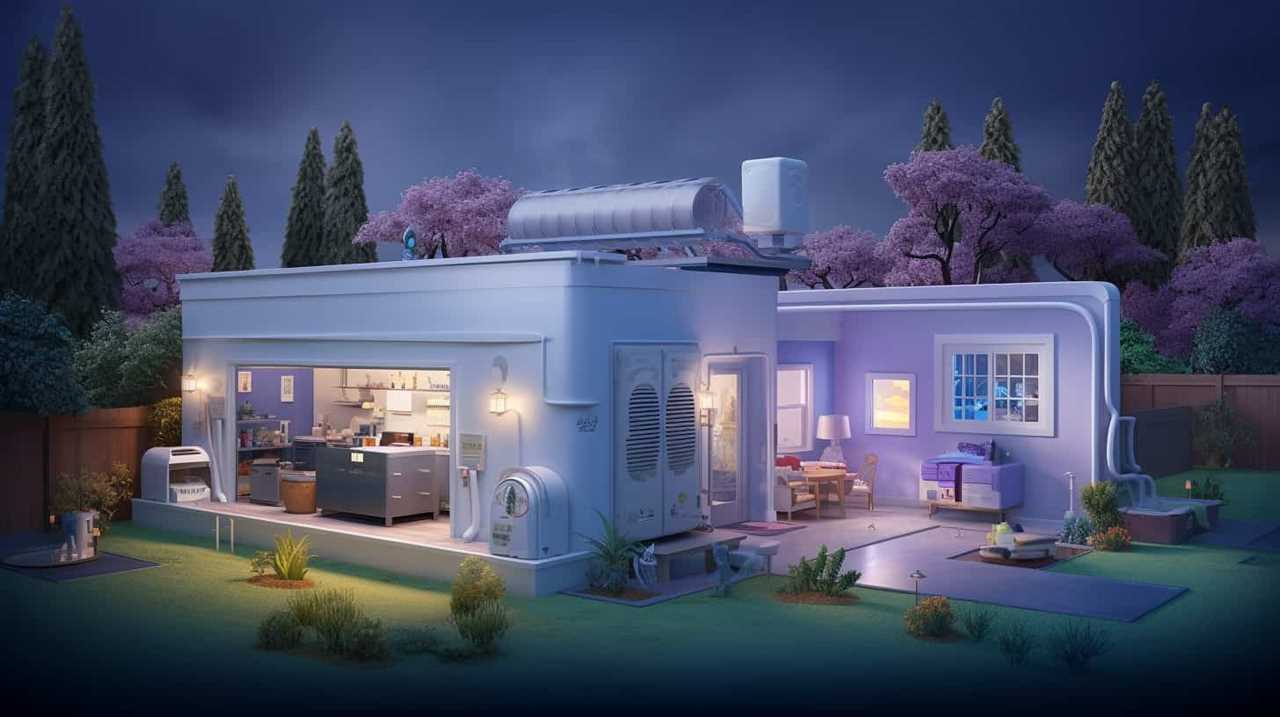
With advancements in thermal energy transfer technology on the horizon, the future of heat pumps holds promise for a more sustainable and environmentally-friendly way to heat and cool our spaces.



